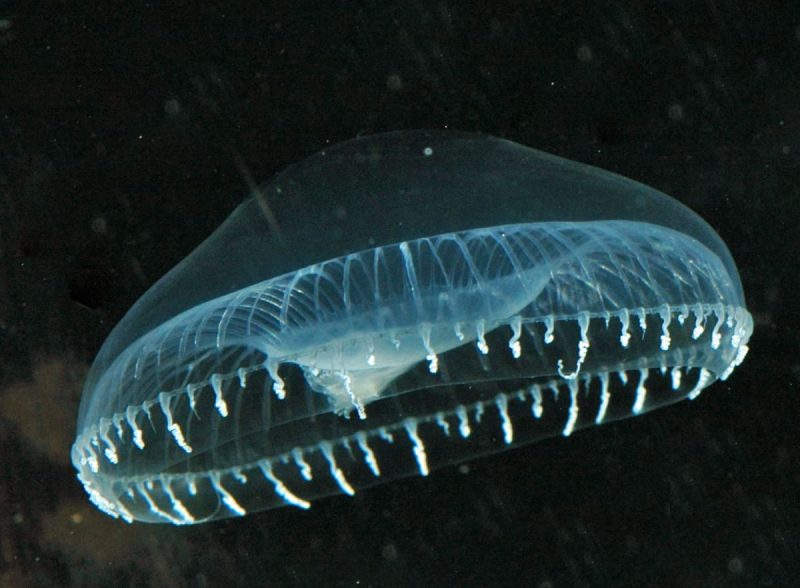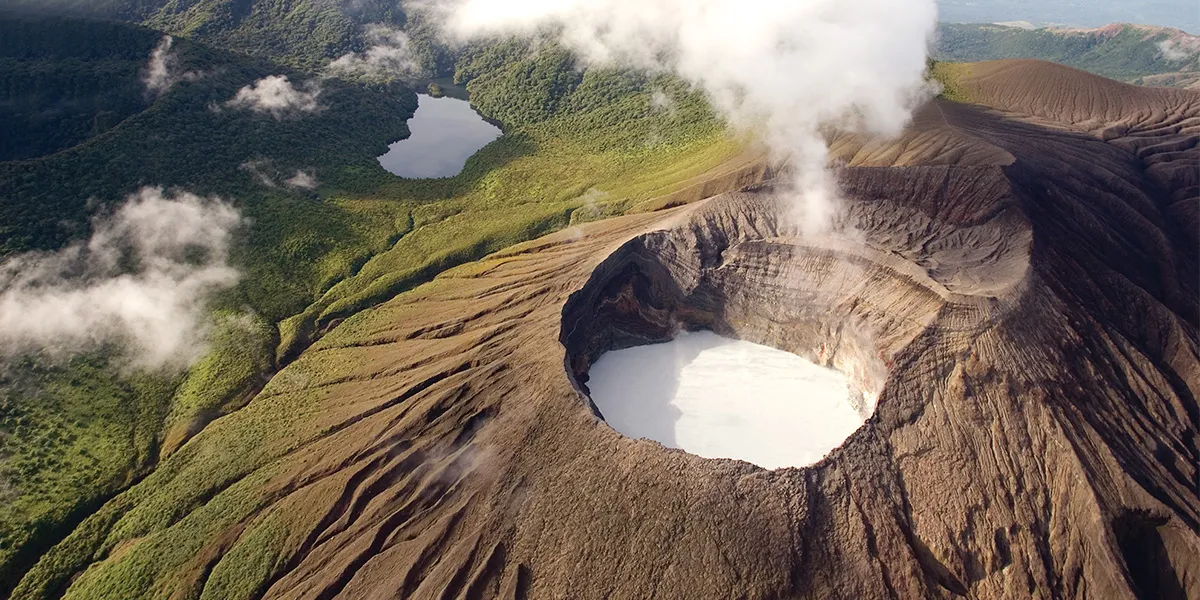Jellyfish is one of the beautiful freely swimming marine animals that belong to the family of phylum Cnidaria. As of now, 350 species of jellyfish are known to humans that are seen across all the oceans in the globe. There is a limited number of jellyfish that can be seen in freshwater. The smallest known jellyfish is Irukandji which is rarely seen by the human eye and the largest known jellyfish is Lion’s mane which is around 8 feet wide in diameter. Immortal jellyfish is one of the longest living animals in the world. The unique part is that Jellyfish is made up of gelatinous mass which contains 95 per cent of water. The following is the list of the types of jellyfish in the world,
Types of Jellyfish
1. Lion’s Mane Jellyfish (Cyanea capillata)
The Lion’s Mane Jellyfish scientifically known as Cyanea capillata is one of the largest known species of jellyfish mostly seen in the waters of the Arctic, northern Atlantic, and northern Pacific Oceans. It is also known by the names of giant jellyfish, arctic red jellyfish, or the hair jelly which uses its stinging tentacles to capture and pull in prey. It primarily feeds on fish, zooplankton, sea creatures, and smaller jellyfish.
The size of the jellyfish vary greatly size depending on the species and is capable of a bell diameter of over 2 m (6 ft 7 in). The natural predators are seabirds, larger fish such as ocean sunfish, other jellyfish species, and sea turtles that mostly attacks juveniles or smaller species of jellyfish because adult one is incapable of being eaten because of their larger size.
Also Read: 10 Amazing Sea Creatures In The World
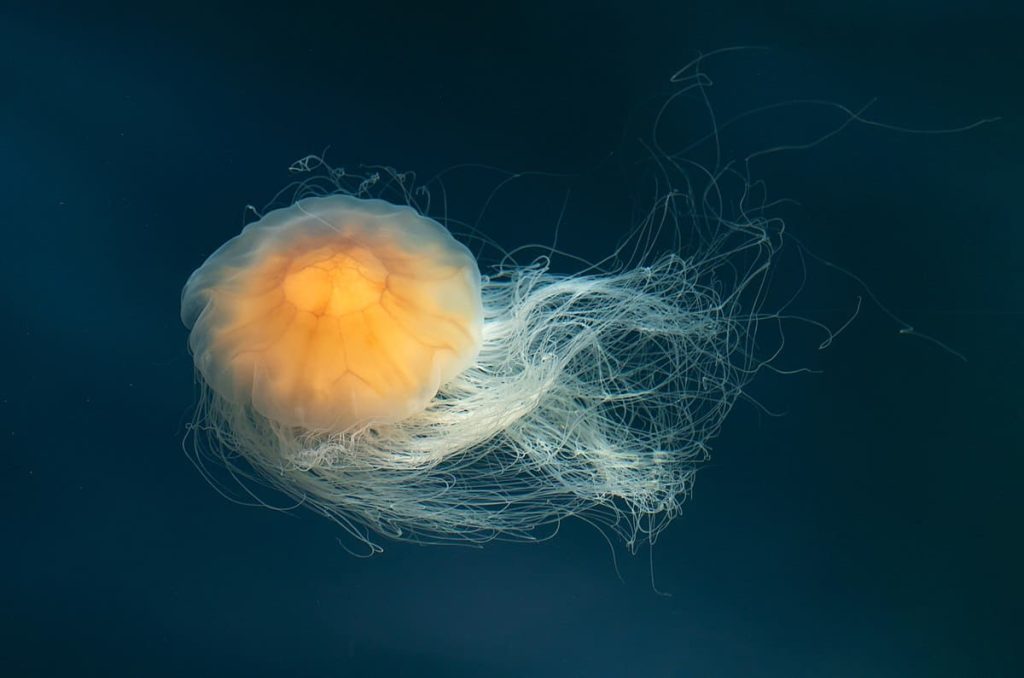
Image Source: Wikimedia
2. Upside-Down Jellyfish (Cassiopea sp.)
The Upside-Down Jellyfish scientifically known as Cassiopea is one of the types of jellyfish that are mostly seen in the warmer coastal regions across the globe and loves to thrive in shallow mangrove swamps, mudflats, canals, and turtle grass flats in Florida, the Caribbean and Micronesia. The unique part is that it used to live upside-down on the bottom and hence the name. The size of the species has been recorded to reach up to 30 individuals per square metre.
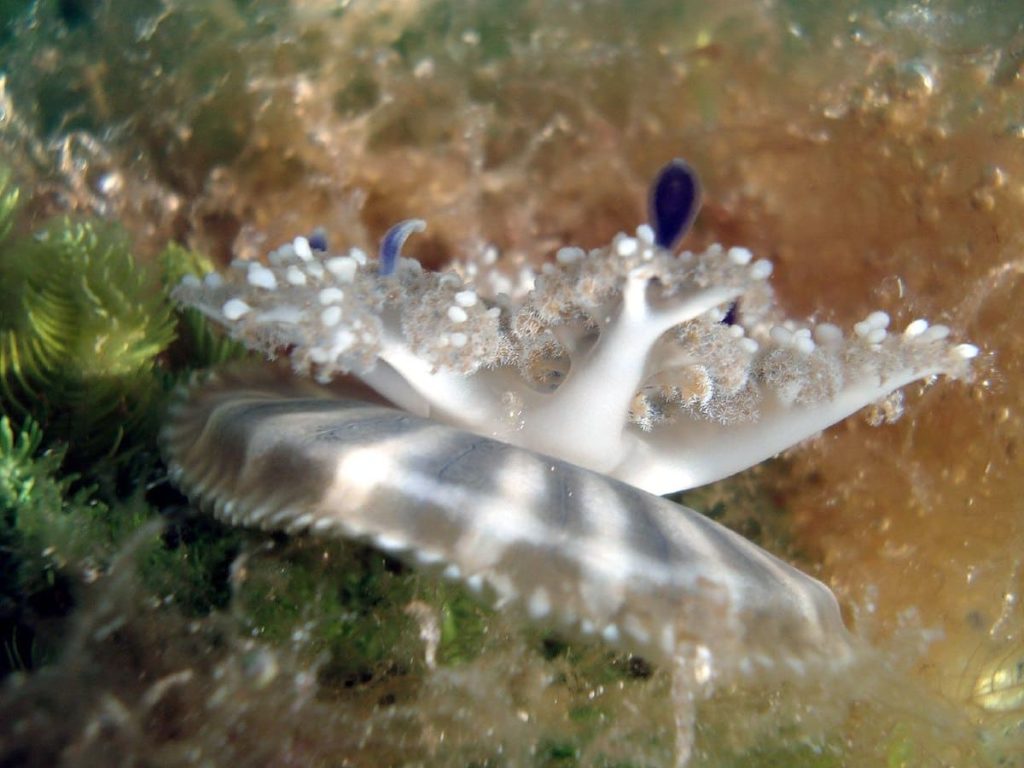
Image Source: Wikimedia
3. Moon Jellyfish (Aurelia aurita)
Moon Jellyfish are scientifically known as Aurelia aurita which can grow upto 25–40 cm (10–16 in) in diameter and can be easily recognised by their four horseshoe-shaped gonads that are visible from the top of the bell. It primarily feeds on medusae, plankton, and molluscs with the help of tentacles and takes it into the body for digestion. Moon Jellyfish is also known as common jellyfish, moon jellyfish, moon jelly or saucer jelly mostly seen in the waters of North, Black, Baltic and Caspian Seas along with Northwest Pacific and South American waters.
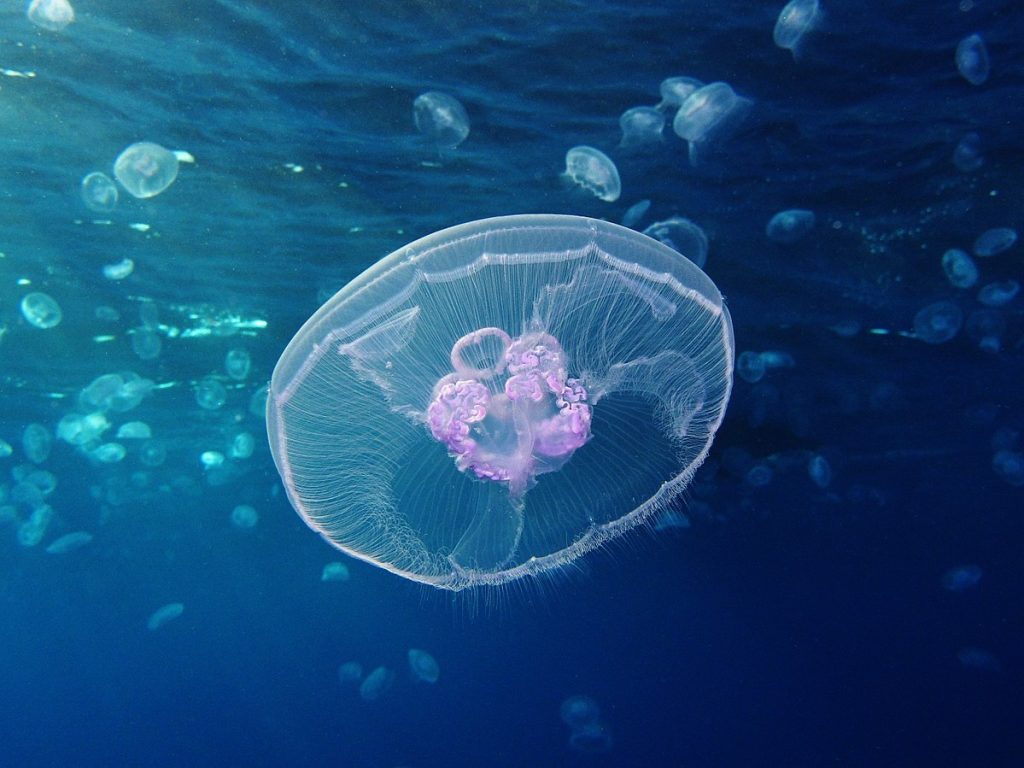
Image Source: Wikipedia
4. Nomura Jellyfish (Nemopilema nomurai)
Nomura’s jellyfish scientifically known as Nemopilema nomurai is a very large rhizostome jellyfish equivalent to the size of the lion’s mane jellyfish known as one of the largest jellyfish in the world. The jellyfish species was named after Mr Kan’ichi Nomura (C18–C19) who is the Director-General of the Fukui Prefectural Fisheries Experimental Station. It can grow upto 2 m (6 ft 7 in) in diameter and the avarage wieght is up to 200 kg (440 lb). This is mostly seen in the waters between China and Japan, primarily centralized in the Yellow Sea and the East China Sea.
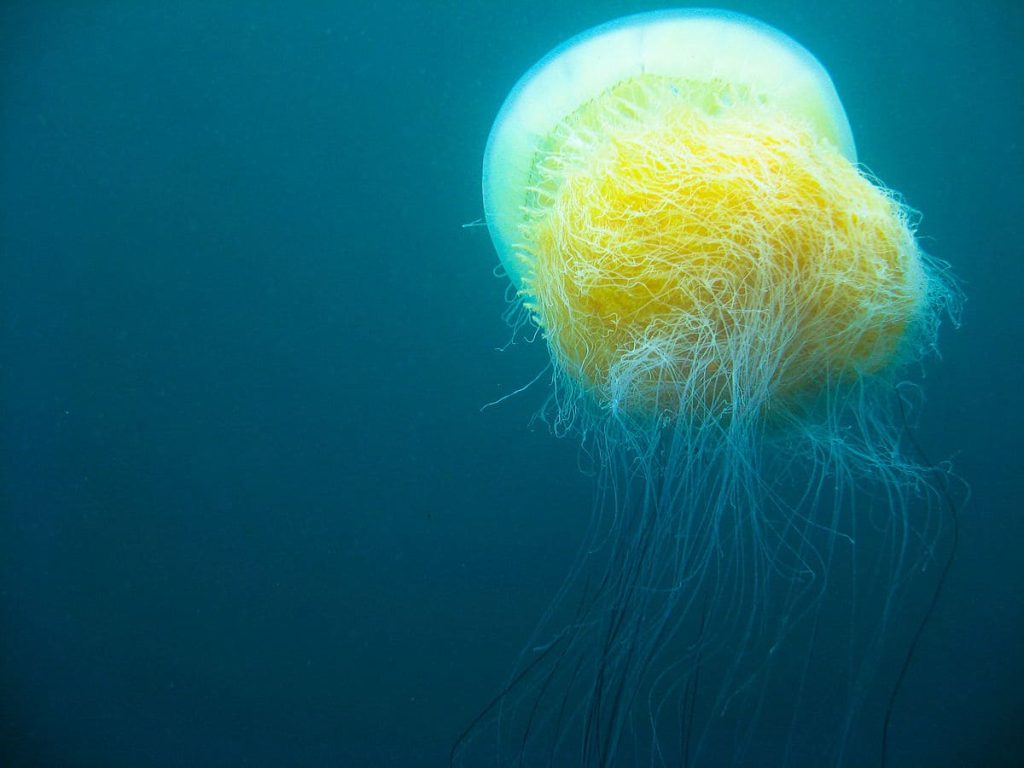
Image Source: Wikimedia
5. Deep Red Jellyfish (Crossota norvegica)
The Deep Red Jellyfish scientifically known as Crossota norvegica is one of the types of jellyfish that belongs to the family of Rhopalonematidae. This species is mostly seen at depths below 1,000 m (3,300 ft). The type of jellyfish is also popular as “alien-like” because of its vibrant red hue. It is one of the smallest jellyfish in the world that can reach upto 2 cm in its body size. It is mostly seen at teh depth of waters deeper than 2,500 m.

Image Source: Wikimedia
6. Crystal Jellyfish (Aequorea victoria)
Crystal Jellyfish scientifically known as Aequorea victoria is one of the bioluminescent animals mostly seen on the west coast of North America. The inventors of the jellyfish Osamu Shimomura and colleagues have won the 2008 Nobel prize for their work in the field. Talking about the appearance, it is entirely transparent and colourless. The bell margin is surrounded by uneven tentacles of almost 150 of them in the adult species. The natural predators include Lions Mane Jellyfishctenophores, Siphonophora and other hydromedusae.
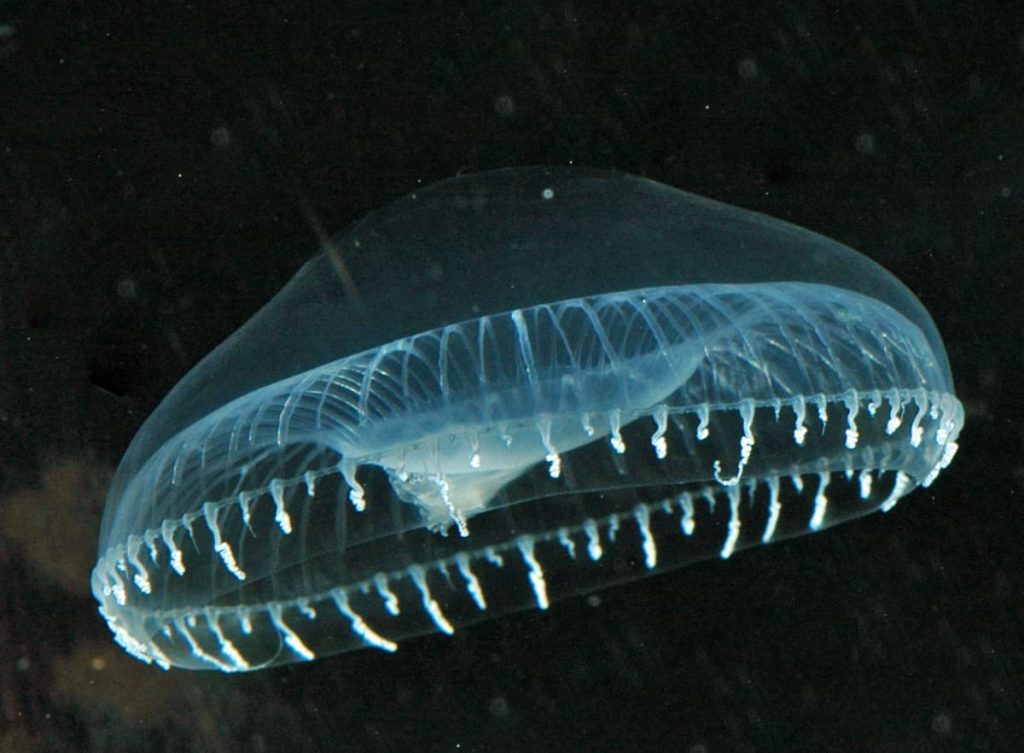
Image Source: Wikimedia
7. Black Sea Nettle (Chrysaora achlyos)
The Black sea nettle scientifically known as Chrysaora achlyos is one of the amazing types of jellyfish seen in the water of the Pacific Ocean. Talking about the appearance, the jellyfish is quite massive with a potential diameter of up to 1 meter (3 feet) and the arms extend upto to 5 or 6 meters (15 or 18 feet). The belly colour is opaque dark purple to nearly black along with the brown reticulated pattern. It has tentacles surrounding the mouth to capture food. Black sea nettle primarily feeds on zooplankton and other jellyfish.
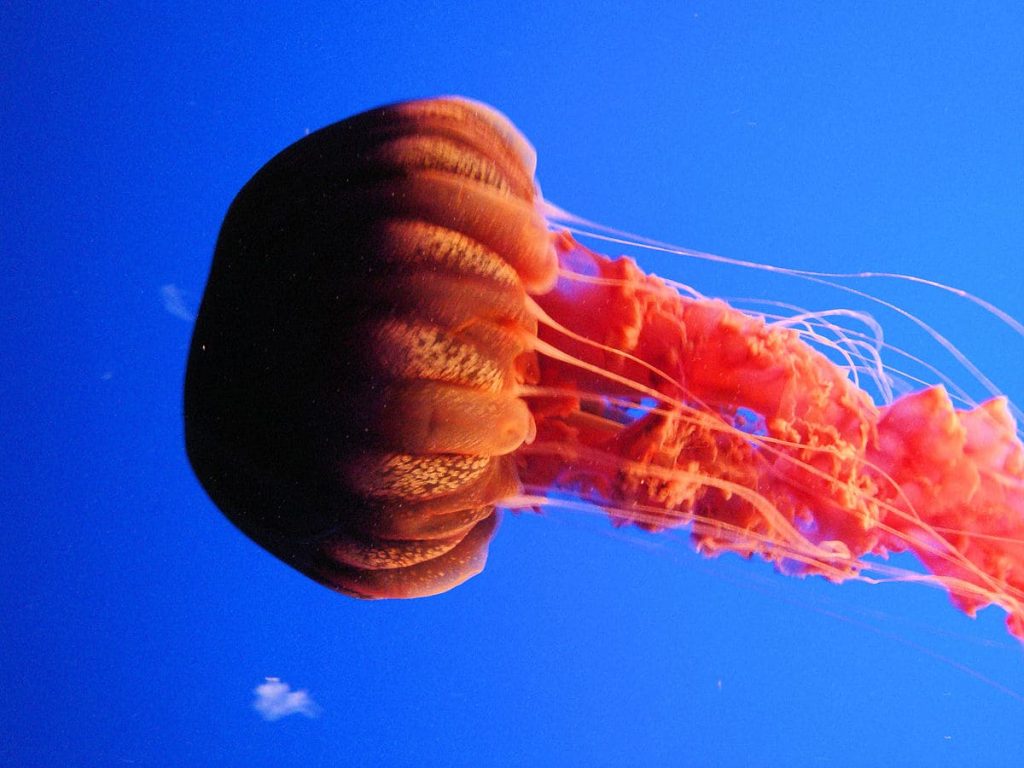
Image Source: Wikimedia
8. Fried Egg Jellyfish (Cotylorhiza tuberculata)
Fried Egg Jellyfish scientifically known as Cotylorhiza tuberculata mostly seen in the waters of the Mediterranean Sea, Aegean Sea, and the Adriatic Sea. It is also known as Mediterranean jellyfish, Mediterranean jelly or fried egg jellyfish and can reach upto a length of 40 cm (16 in) in diameter. It has very little impact on humans and stings can cause itching and scratch in the area. It primarily feeds on zooplankton and other jellyfish. It can grow upto 24 in (60.9 cm) in length and weighs upto 1.05 oz (0.03 kg).
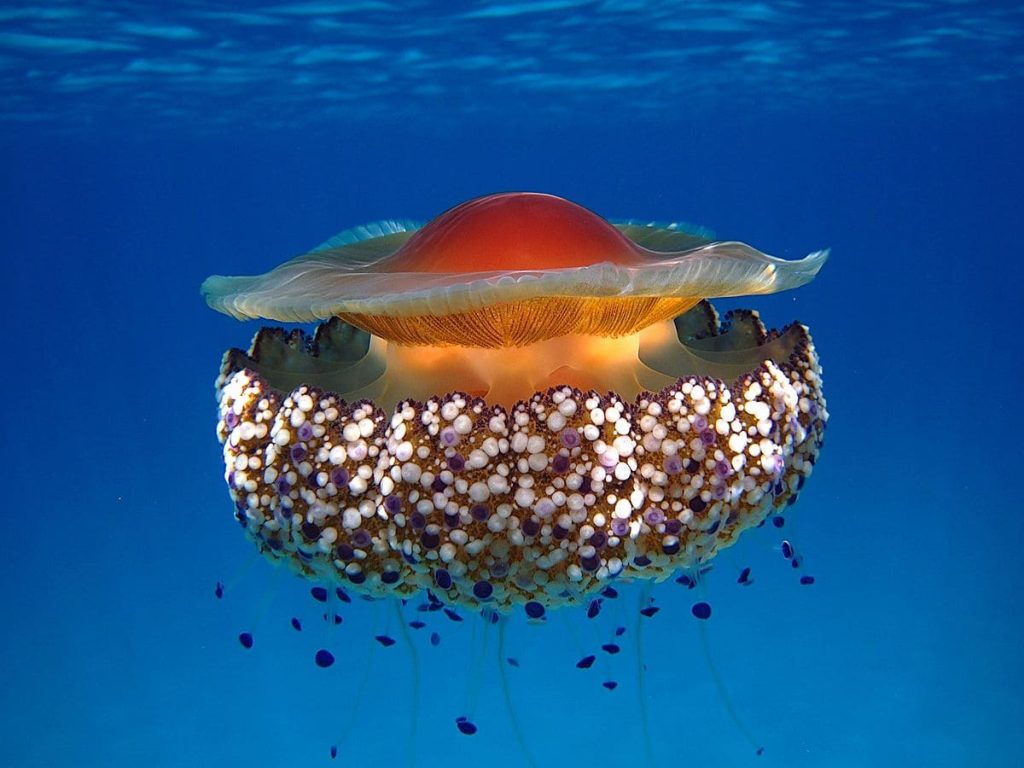
9. Atolla Jellyfish (Atolla wyvillei)
Atolla jellyfish scientifically known as Atolla wyvillei is one of the beautiful types of jellyfish that can be seen on all ocean waters across the globe. It is also known as Atolla jellyfish or Coronate medusa and is known for its amazing red colour. The jellyfish was named in the honor of Sir Charles Wyville Thomson who is the chief scientist on the Challenger expedition. This type of jellyfish is also bioluminescent and whenever it was attacked it will launch a series of flashes to save itself from the predators.
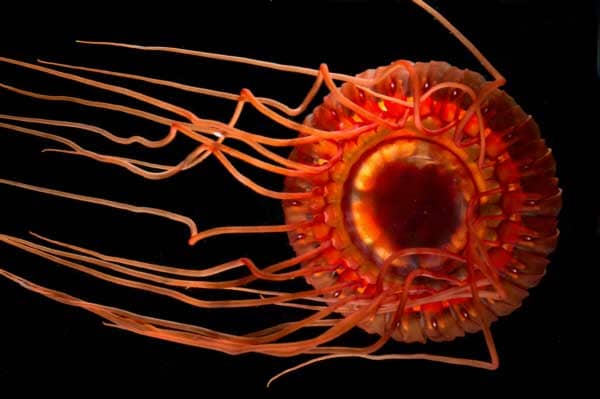
10. Cauliflower Jellyfish (Cephea cephea)
The Cauliflower jellyfish are scientifically known as Cephea cephea can grow upto 5 in (12.7 cm). The jellyfish species prey on plankton, shrimp, fish eggs, algae, and invertebrate larvae. The natural predators include fishing and sea turtles. Cauliflower Jellyfish is bluish-purple in colour and eating habit is carnivorous in nature. The jellyfish species is endemic to the Red Sea, Indo-Pacific Ocean, and East Atlantic Ocean.
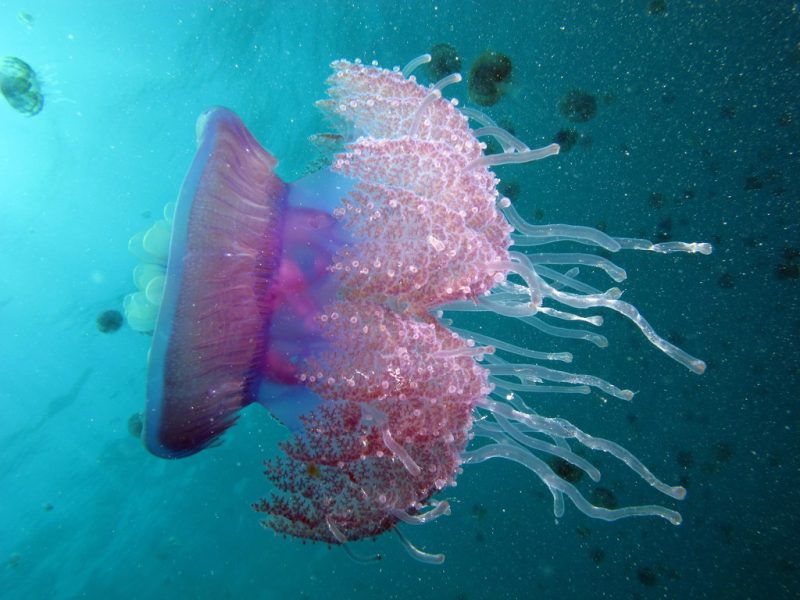
Image Source: Wikimedia
These are the different types of jellyfish in the world. Kindly share and do post your comments.

